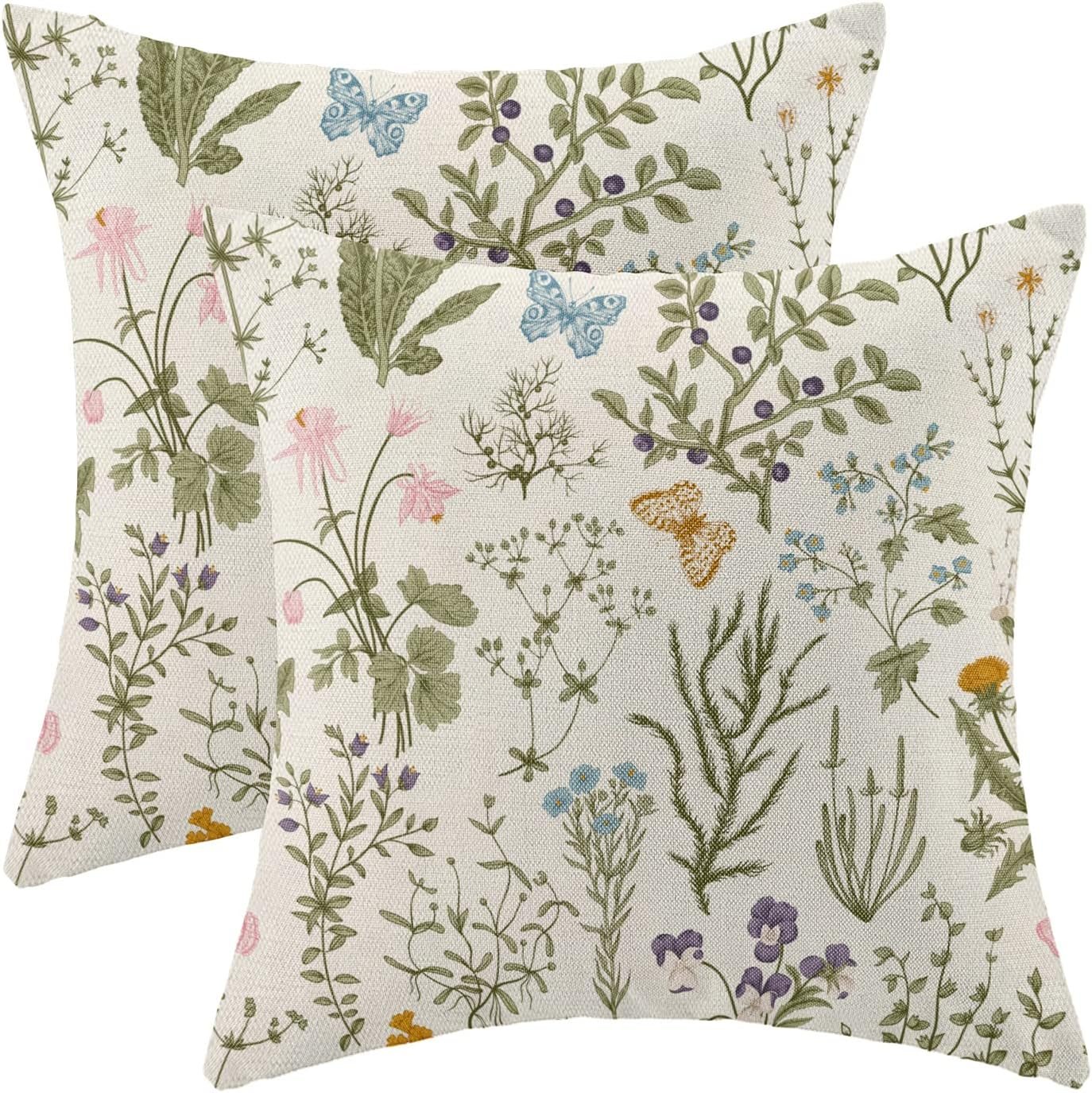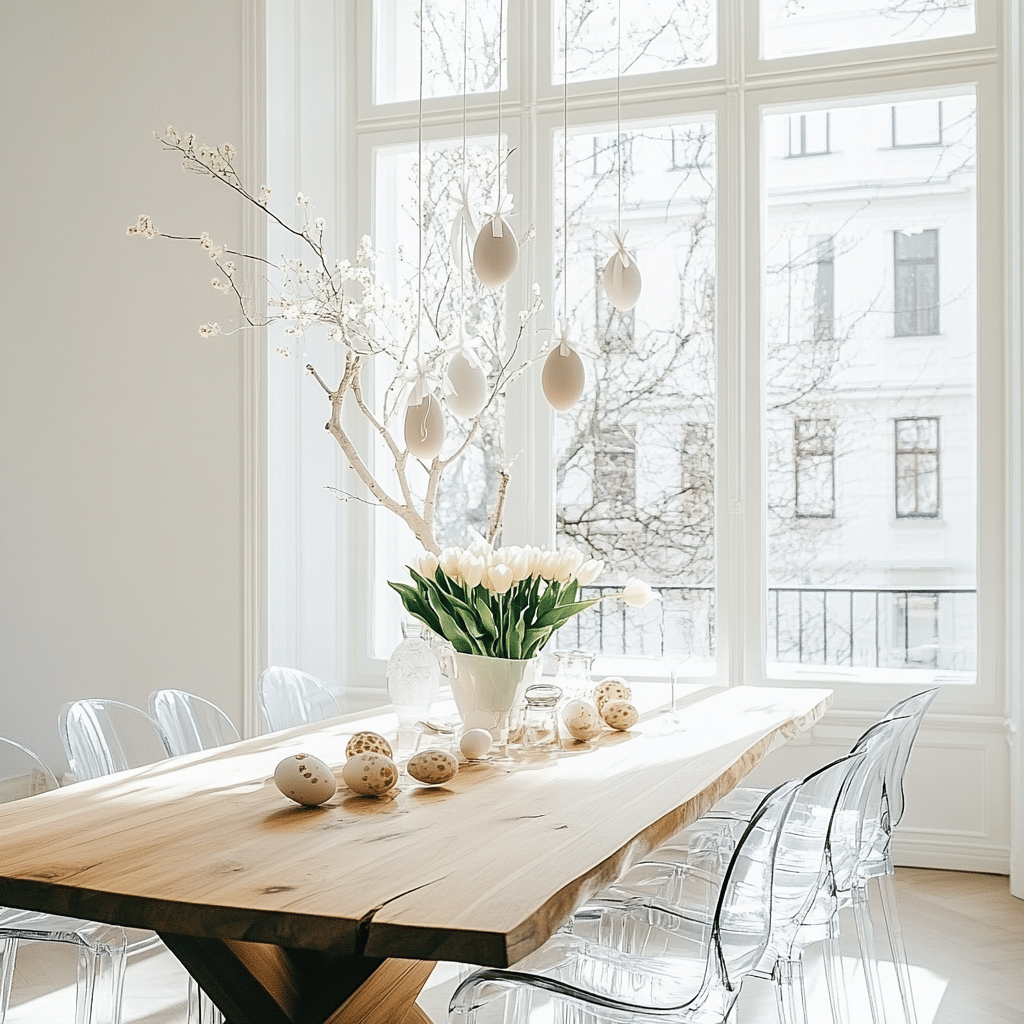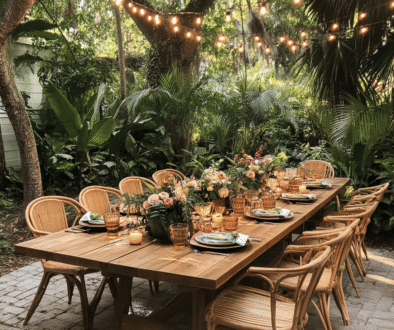Create Ribbon Egg Ornaments : The Best Guide
Springtime always gets my creative juices flowing. As the flowers begin to bloom and the days grow longer, I find myself drawn to colorful, festive crafts that brighten up my home. Easter decorations are some of my absolute favorites to make, and today I’m excited to share one of my most beloved projects with you: ribbon egg ornaments.
These elegant decorations may look intricate and complicated, but they’re actually quite simple to create. With just a handful of materials and a little patience, you can craft beautiful ornaments that will become treasured parts of your Easter decor for years to come.




Why I Love Ribbon Egg Ornaments
Before I dive into the how-to, let me tell you why these have become a staple in my spring decorating routine. First, they’re incredibly versatile. I hang mine from a decorative branch arrangement that sits on my dining table, but they also look stunning dangling from lampshades, doorknobs, or even outdoor trees for a spring garden party.
Second, they’re customizable to match any decor style. Whether your home features pastel colors, bold brights, or sophisticated neutrals, you can select ribbons that complement your existing aesthetic perfectly.
Finally, these ornaments make wonderful gifts. I’ve given them to friends and family as Easter surprises, hostess gifts, and even as thoughtful spring birthday presents. Everyone always asks how I made them!

Materials You’ll Need
Let’s gather everything before we start crafting. Here’s what you’ll need:
- Plastic craft eggs (the type that opens in half)
- Assortment of ribbons in various widths and patterns
- Straight pins with small heads (pearl-headed pins work beautifully)
- Small beads, charms, or embellishments (optional)
- Thin ribbon or string for hanging
- Scissors
- Ruler
- Small hot glue gun and glue sticks
I typically find all these supplies at my local craft store, though online retailers have great selections too. The plastic eggs usually come in packages of 6-12, and they’re quite inexpensive. As for ribbons, this is where you can really personalize your project. I recommend choosing 3-5 complementary ribbons in different widths, from very narrow (1/8 inch) to wider styles (up to 1 inch).

Selecting Your Color Scheme
The key to creating sophisticated-looking ornaments is to work within a cohesive color palette. Here are some combinations I’ve tried with beautiful results:
- Pastels: Soft pink, light blue, lavender, and cream
- Vintage: Ivory, champagne, dusty rose, and sage green
- Modern: Navy, mint, coral, and white
- Rustic: Burlap, cream, sage, and tan
- Monochromatic: Various shades and textures of a single color
I usually select one patterned ribbon (like polka dots, stripes, or florals) and pair it with several solid-colored ribbons. This creates visual interest without becoming overwhelming.

Step-by-Step Instructions
Now for the fun part! Here’s how to create your own ribbon egg ornaments:
1. Prepare Your Egg
Start by separating the plastic egg into its two halves. If your egg has small holes or protrusions at the top and bottom, you might want to cover these first with a small piece of ribbon or decorative tape. This creates a smoother surface for wrapping.
In each half of the egg, poke a small hole at the top where you’ll eventually thread the hanging ribbon. I use the tip of my scissors for this, but a large needle works well too.
2. Start With Your Base Layer
I always begin with my widest ribbon, which creates a foundation for the additional layers. Cut a length that will wrap completely around the middle of your egg half with about ½ inch of overlap.
Apply a tiny dot of hot glue to one end of the ribbon, attach it to the middle of the egg half, and wrap it around, securing the overlapping end with another dot of glue. Make sure this base ribbon is straight and evenly positioned around the middle of the egg.
3. Add Your Second Layer
Now select a complementary ribbon that’s slightly narrower than your base. Cut a piece that will wrap around the egg, positioning it slightly above the base ribbon with a small gap between them.
Secure this ribbon in the same way, with a dot of glue at the beginning and end. Here’s where I add my first few pins: I insert them at the overlap point of each ribbon, pushing them in at a slight angle so they stay secure.
4. Create a Pattern Working Upward
Continue adding ribbons, working from the middle of the egg upward toward the hole you created earlier. I typically space my ribbons about ¼ inch apart, but you can adjust this based on the size of your egg and the width of your ribbons.
As you work, try alternating solid colors with patterns, or mix wider ribbons with narrower ones for visual interest. Each time you add a ribbon, secure it with small dots of glue and pins at the overlapping points.
5. Repeat the Pattern Working Downward
After reaching the top of the egg half, I start again from my center ribbon and work downward toward the wider end of the egg, following the same process. This creates a beautiful symmetrical effect.
The ribbons will naturally begin to curve as they follow the egg’s shape. Embrace this – it adds to the ornament’s dimensional appeal.
6. Add Embellishments
Once all your ribbons are in place, it’s time for the extra touches that make these ornaments special. This is where creativity really comes into play!
I love to add small pearl-headed pins at the intersections of ribbons or in decorative patterns. Sometimes I’ll attach tiny beads, sequins, or miniature charms between ribbon rows. Small silk flowers, tiny feathers, or even miniature bows can make charming additions.
Remember, less is often more here. A few well-placed embellishments will look more elegant than an overly crowded design.
7. Finish the Second Half
Repeat steps 2-6 with the second half of your egg, using the same ribbons and embellishments to create a coordinated look. I try to match the pattern exactly so when closed, the egg appears seamless.
8. Add Hanging Ribbon
Cut about 8 inches of thin ribbon or decorative string for hanging. Thread it through the holes you created at the tops of both egg halves, then tie the ends together in a secure knot. I often add a small drop of glue at the knot for extra security.
If you’re feeling fancy, you can create a more elaborate hanger with a beaded design or multiple ribbons braided together.
9. Join the Halves (Optional)
You can leave your egg as separable halves, which is handy if you want to tuck small treats or notes inside. However, if you prefer a sealed ornament, add a thin line of hot glue around the edge of one half and carefully press the halves together.

Display Ideas for Your Ribbon Egg Ornaments
Now that you’ve created these beautiful ornaments, how should you display them? Here are some of my favorite ways:
Easter Tree
This is my personal favorite. I collect interesting branches from my yard (pussy willow, forsythia, or birch work beautifully), arrange them in a tall vase, and hang my egg ornaments from the branches. The effect is stunning – like a springtime Christmas tree!
Chandelier Display
Hanging these ornaments at varying heights from a dining room chandelier creates a eye-catching focal point for Easter dinner. The light catches the ribbons and any metallic embellishments beautifully.
Curtain Tie-Backs
Group several eggs together with a length of ribbon and use them to tie back curtains for a festive spring touch.
Basket Fillers
Place them among natural excelsior or moss in a beautiful basket for a sophisticated take on the traditional Easter basket.
Individual Place Settings
I’ve used smaller versions as place card holders for Easter dinner. Simply attach a small name tag to the hanging ribbon for a personalized touch your guests will love.

Troubleshooting Tips
Even this relatively simple craft can have a few hiccups. Here are solutions to common challenges:
Ribbons Slipping Out of Place
If your ribbons won’t stay put, try using double-sided tape in addition to glue. It provides excellent grip without adding bulk.
Pins Not Staying Secure
Insert pins at a slight angle rather than straight in. This creates more friction and helps them stay put. A tiny drop of clear nail polish where the pin enters the egg can also help secure it.
Difficulty Working with Very Thin Ribbons
Very narrow ribbons can be tricky to handle. I sometimes stiffen them slightly with spray starch before working, which makes them easier to position precisely.
Egg Halves Not Aligning
If your egg halves don’t match up perfectly, don’t worry! You can disguise the join by adding a band of ribbon around the middle of the completed egg.

Variations to Try
Once you’ve mastered the basic technique, there are countless ways to adapt these ornaments:
Seasonal Themes
While perfect for Easter, these ornaments can be adapted for other holidays too. Red and green ribbons for Christmas, orange and black for Halloween, or red, white, and blue for patriotic celebrations.
Natural Materials
Try incorporating natural elements like thin dried grasses, small pressed flowers, or tiny feathers between ribbon layers.
Fabric Scraps
Don’t limit yourself to ribbon! Small strips of beautiful fabric can create stunning textural effects. I’ve used scraps of silk, lace, and even tweed with beautiful results.
Decoupage
For a different look altogether, try covering your egg with small pieces of decorative paper using decoupage medium before adding select ribbon accents.
Why Handmade Decorations Matter
In our world of mass-produced everything, there’s something deeply satisfying about creating beautiful objects by hand. When I hang my ribbon eggs each spring, I’m not just decorating my home – I’m continuing a tradition of seasonal craftwork that connects me to generations past.
Handmade decorations carry stories within them – the year you made them, where you found that special ribbon, who you were thinking of as you crafted. They become heirlooms in a way store-bought items rarely do.
Plus, the process itself is therapeutic. In the hustle of daily life, sitting down to focus on creating something beautiful provides a welcome moment of mindfulness. The repetitive nature of wrapping ribbons and placing pins has an almost meditative quality that I find deeply relaxing.

Final Thoughts
Ribbon egg ornaments have become one of my signature spring crafts. Friends now look forward to seeing what new color combinations and embellishments I’ll use each year. There’s something so rewarding about developing a craft tradition that evolves over time while remaining true to its roots.
I hope this guide inspires you to try creating these elegant decorations yourself. Don’t worry about achieving perfection on your first attempt – part of the charm of handmade items is their unique character. With practice, you’ll develop your own style and preferences.
Remember, the most important aspect isn’t how precisely your ribbons are placed or how fancy your embellishments are – it’s the joy you find in creating something beautiful with your own hands. Happy crafting, and happy spring!
Have you tried making ribbon egg ornaments or similar Easter decorations? I’d love to see your creations! Share your photos or questions in the comments below.
If you love home decor and interior design as much as I do, check out these other articles I think you might like.
How to Create a Stunning Moss-Covered Monogram for Easter




